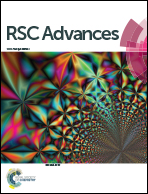Recent advances in the synthesis of biologically and pharmaceutically active quinoline and its analogues: a review
Abstract
Recently, quinoline has become an essential heterocyclic compound due to its versatile applications in the fields of industrial and synthetic organic chemistry. It is a vital scaffold for leads in drug discovery and plays a major role in the field of medicinal chemistry. Nowadays there are plenty of articles reporting syntheses of the main scaffold and its functionalization for biological and pharmaceutical activities. So far, a wide range of synthesis protocols have been reported in the literature for the construction of this scaffold. For example, Gould–Jacob, Friedländer, Pfitzinger, Skraup, Doebner–von Miller and Conrad–Limpach are well-known classical synthesis protocols used up to now for the construction of the principal quinoline scaffold. Transition metal catalysed reactions, metal-free ionic liquid mediated reactions, ultrasound irradiation reactions and green reaction protocols are also useful for the construction and functionalization of this compound. The main part of this review focuses on and highlights the above-mentioned synthesis procedures and findings to tackle the drawbacks of the syntheses and side effects on the environment. Furthermore, various selected quinolines and derivatives with potential biological and pharmaceutical activities will be presented.

- This article is part of the themed collections: Organic chemist’s toolbox and 2020 Reviews in RSC Advances


 Please wait while we load your content...
Please wait while we load your content...